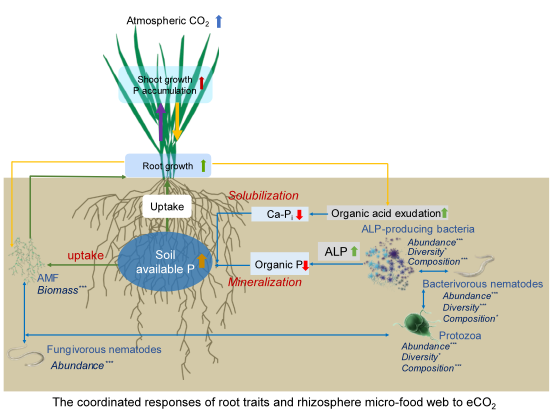Recently, the Agricultural Clean Watershed Team at the Institute of Environment and Sustainable Development in Agriculture, Chinese Academy of Agricultural Sciences, revealed the biological mechanism by which crops adjust root morphology, physiological traits and rhizosphere microbial food web to acquire phosphorus under the condition of long-term elevated CO2 concentration. The related research findings have been published in iMeta.

The analysis of crop phosphorus acquisition strategies under the condition of long-term elevated CO2 concentration is crucial for sustainable agriculture to address climate change. The research found that elevated CO2 concentration improves wheat root morphology, physiological traits and arbuscular mycorrhizal fungal growth, promotes phosphorus mineralization and dissolution, enhances the rhizosphere microbiota interaction, thereby promoting wheat growth and phosphorus utilization efficiency.
The research results emphasize the important role of root traits and multi-trophic interactions between the microbiota in regulating crop phosphorus acquisition strategies. This knowledge enhances our understanding of crop nutrient acquisition strategies under global climate change and provides theoretical support for rational phosphorus management in agricultural systems.
This research was supported by the National Key R&D Program for Young Scientists, the National Natural Science Foundation of China and the Agricultural Science and Technology Innovation Program of the Chinese Academy of Agricultural Sciences.
Linkage: https://doi.org/10.1002/imt2.245

